- Home
- Matthew Condon
The Night Dragon Page 3
The Night Dragon Read online
Page 3
In April 1954, when O’Dempsey was 15 years old, the local newspaper reported that a ‘gang’ of schoolboys had been questioned over stolen property. The Warwick Daily News said that a group of boys – aged 11 to 16 – had been quizzed over the thefts. ‘On Wednesday and Thursday, the boys – mainly from two schools – were taken to the police station, and rigorous questioning revealed an amazing story of their activities,’ the paper said. The 16 boys involved represented several gangs, who were not amalgamated in their operations but worked more in competition with each other. It was believed that several of the boys played a lone hand or operated in pairs. As the newspaper reported:
It is understood that the lads concerned readily admitted their part in various thefts, the breaking and entering of shops, hotels, warehouses and private dwellings and a school from where a souvenir pistol was taken.
Articles already recovered by police include four rifles, gelignite, detonator caps, knives, watches, a box of bullets, cigarettes, cigarette lighters, razors, propelling pencils, keys and money.
Some of the boys confessed that three of the rifles had been buried in the middle of a paddock behind the Warwick Base Hospital. They said the guns had been concealed in that way so that other gangs could not get hold of them. They had all been stolen from a shop in Palmerin Street and the loss had not been reported to police.
It was the same in regard to a number of other articles recovered by the police. This included five large sticks of gelignite – sufficient, according to the police, to blow up any large building in the city. This gelignite and a tin of detonators had been hidden underneath the home of one of the boys. With these deadly explosives, some of the lads had apparently intended to manufacture ‘home-made bombs’ but for what purpose is still not quite clear.
The report said the recovery of the explosives had probably averted a certain tragedy. The police added that they would soon be visiting a cave situated ‘15 miles from Warwick where several of the boys allegedly admitted they had cached a quantity of stolen property’.
(According to locals and relatives, O’Dempsey was a regular visitor to what was referred to as ‘Captain Starlight’s cave’, a hiding place for the notorious 19th century bushranger. The cave is about ten kilometres out of Warwick in the district of Massie.)
The report also said:
Most of the boys made a clean breast of their part in the thefts. They are all from good homes with a happy environment, and Senior Sergeant A.M. Cooper said yesterday that their parents or guardians had been very cooperative with the police in cleaning up the thefts.
It is not known yet whether the boys will appear before the Children’s Court, but it is certain that the lesson already learnt by them – that crime does not pay – will serve as a deterrent to any future ‘gang’ activities.
None of the boys was named in any of the local newspaper reports about the incident. There were also no subsequent reports about delinquent ‘gang’ members and thieves appearing before any court. It appears the matter was concluded with harsh warnings from school authorities and the police.
As for O’Dempsey, it was precisely around this time that his father, Tom, took him to be assessed at a Toowoomba psychiatric hospital. There, he was medically diagnosed as ‘a psychopath with schizoid tendencies’.
Had the ‘gang’ incident compelled O’Dempsey’s moral and righteous parents to seek help for their troubled boy? And was he the one who had stashed gelignite under the family home in Stewart Avenue?
Bodgie
By the late 1950s, O’Dempsey was a full-blown bodgie. (The male bodgies and female widgies were teenage ‘louts’ that formed gangs in post-war Australia. They were predominantly from working-class families and expressed their defiance of authority in their dress and mannerism.) O’Dempsey was seen around town wearing tight, leopard-skin patterned pants. He had a couple of tough mates he hung out with. ‘Vince’s headquarters in those days was the old billiard hall in Grafton Street,’ one friend says.
The long, rectangular hall had an awning out over the footpath. Inside, it had a high metal-pressed ceiling. In the 1940s it was known as Jim Mutch’s Billiard Saloon and it occasionally hosted tournament events. As the Warwick Daily News reported in May 1946:
Mutch’s Saloon is one of the billiard rooms in Queensland equipped with neon lights, and it has every other facility for the comfort and convenience of patrons. The three tables have recently been re-covered and new sets of balls are now in play. Electric heaters are at present being installed for the winter months. Under such conditions the pleasurable pastime of billiards and snooker is sure to boom.
The saloon was not far from the statue of former Queensland premier and member for Warwick, Thomas Joseph Byrnes, in the centre of Palmerin Street. Burns, at just 37, dropped dead in office after only five months as the State’s leader. Great things had been expected of him.
Not so for O’Dempsey, there in the dark of the billiard hall, looking out onto the world and planning his next move. As one acquaintance remembers of those days: ‘Vince’d have his hair slicked back at the sides, you know, a bit like Elvis but not as tidy. He didn’t like the law for some reason. He was a wild lad around town when he was younger. He used to hang out at the billiard hall and the Langham Hotel and you didn’t go to those places if you knew he was going to be there.’
When shooting the breeze at the billiard hall years later, Vince was asked about the best way to get ‘girls’. One local allegedly heard O’Dempsey say that procurement was easy, you just ‘walk up behind them with a rag soaked in chloroform and hold it over their nose, then you can do what you like with them’.
As an acquaintance recalls: ‘Vince O’Dempsey was always where the trouble was, or wherever there was trouble he was there. Whether he caused it or not I don’t know. But you’d never know when you’d come across him.’
The friend said the billiard hall in Grafton Street was Vince’s main lair. ‘There were not a lot of women there. The blokes would just play pool and talk crap. There was no alcohol. But it was dark. And it was sleazy. You wouldn’t want to go in there.’
As for Vince, he shared little of his life with his family. ‘He wouldn’t talk to anybody about anything,’ says Darcy O’Dempsey. ‘You never asked him any questions on anything. He was too smart for anyone to get any leverage on him. Basically, he didn’t trust anybody.’
In 1956, just two years after the shocking ‘gangs of Warwick’ incident stunned the small Darling Downs town, Vince O’Dempsey earned his first conviction. He was charged with stealing and placed on a 12-month good behaviour bond. This was followed in 1958 with a charge of being present ‘unlawfully on enclosed area’. He was fined two pounds.
His boxing skills, too, were used for a different purpose as he moved through his teens. Locals recalled O’Dempsey ‘and his gang’ turning up to local dances and terrorising patrons. ‘One night he walked straight up to the guy on the door, punched him in the face and broke his nose,’ one local said. ‘They just walked straight into the dance and caused trouble for everyone.’
In March 1959, aged 20, Vince was charged with using threatening language. Just two months later he was picked up again for something that would echo into his future. On 13 May, O’Dempsey was charged with ‘aggravated assault of a sexual nature on a female child’. He was convicted, fined 25 pounds and placed on a six-month good behaviour bond. One O’Dempsey family friend says that despite these early infractions with the law, Vincent’s mother stuck by her son.
‘His mum never missed a court case,’ the friend says. ‘When she died they found scrapbooks with every newspaper clipping published about him. They were loyal to him. And Vince was good to his mother.’
It was around this time, too, that the young O’Dempsey took a ‘job’ that would introduce him to the basic skills for a criminal career. At school O’Dempsey had met a boy called Brian Sparksman, whose father Jac
ob ‘Dick’ Sparksman ran a farm out near the Glengallan Homestead. The Sparksmans were a well-respected family with deep roots in both the Warwick district and the nearby township of Allora. Dick Sparksman, however, also had a sideline as an SP bookie. In the late 1950s and into the 1960s, he employed O’Dempsey as his ‘debt collector’.
‘[Dick] Sparksman definitely was an SP bookie,’ says one O’Dempsey family friend. ‘He was a heavy. He had a few airs and graces about him and thought he was better than most … Nowadays people get into financial strife with drugs, back then it was gambling. If you owed money and Vince O’Dempsey came calling, you paid. I think Vince did a bit of pencilling for him at one stage. Vince would have known who did and didn’t pay all over town.’
One source says O’Dempsey went to collect one day from a punter who had no cash. So Vince supervised as the man loaded his own household furniture onto the back of a truck.
In later years locals say a Sparksman cheque to one of the pubs in town bounced. Given the SP bookie had for years been prising money out of district punters, the cheque was mounted on a wall in the bar and remained there for years for all to see. Small towns have their own system of justice, too.
Retired detective Alan Marshall and his partner at the time, Trevor Menary, spent time in the late 1970s investigating O’Dempsey’s teenage years in Warwick. They discovered that on 6 June 1959 O’Dempsey’s violence escalated. ‘He got charged with assaulting an off-duty sergeant,’ recalls Marshall. In fact, O’Dempsey had thrashed the police officer to within an inch of his life and was charged with stealing with actual violence in company, and with assault occasioning bodily harm.
The Criminal Court was told that O’Dempsey, 20, and a friend, Desmond John Locke, 19, both labourers, were loitering near the corner of Grafton Street and Acacia Avenue when the incident occurred. Sergeant Francis Joseph Toohill, 40, was off duty when he saw the two men standing near a bicycle that had fallen over. Toohill asked them what they were up to and was told: ‘Keep your ——— nose out of our business.’
The police officer was continuing down the street when he heard footsteps behind him, then suffered a blow to the back of his head and fell to his knees. He was robbed of two pounds. Toohill would go on to tell the Criminal Court that he ‘still suffered the effects of having been kicked and punched’ by the two youths.
According to one source who knew O’Dempsey, it was a brutal beating. ‘When police arrived at O’Dempsey’s home, there was still blood and hair on his boots.’
On 13 August 1959, O’Dempsey was convicted on two charges – stealing with actual violence in company, and assault occasioning bodily harm. He was sentenced to five and three years’ hard labour in prison on the consecutive charges, to be served concurrently. An appeal against his convictions was dismissed in late 1959. He would serve at least two and a half years in prison before being eligible for parole.
Marshall says: ‘He [O’Dempsey] had been in and out of institutions and things around that time, and that’s when he was diagnosed as a paranoid schizophrenic …’
One relative had witnessed the incident with the off-duty police officer. ‘I was there, I saw it. Vince was just sitting there and this copper came up to him and gave him a good clip around the earhole. He could handle himself. He gave that bloke a terrible flogging.’
Darcy O’Dempsey concurs that Vince was struck first by the police officer, then retaliated: ‘With the police … it stemmed from anybody who tried to stand over him. He wouldn’t cop anyone standing over him in any way, shape or form.’
Despite being represented in court by pre-eminent barrister Dan Casey, O’Dempsey and Locke were found guilty. Chief Crown Prosecutor R.F. Carter told the court that both youths were considered ‘standover men’ and each had prior convictions.
According to an associate of O’Dempsey’s, when he was released from gaol a few years later, police in Warwick ‘would walk on the other side of the street from him’ when they saw him in town.
The Chermside Gang
In the knockabout suburb of Chermside in Brisbane’s inner-north, replete as it was with box-like post-war housing commission homes, another group of friends, bound by adversity and tough times, were also forming attachments that would lead them into criminal careers. As children, they’d all met in and around the local neighbourhood. Garry ‘Shorty’ Dubois lived with his family in Unmack Street. Tommy Hamilton lived four houses up. Keith Meredith lived not far from Unmack Street. Peter Hall grew up in nearby Kedron.
Despite its deeply conservative bent, even Queensland was not immune to what was happening in the outside world in the 1960s, especially when it came to political and cultural influences. Historian Raymond Evans wrote in his essay ‘“Real Gone Town”: Popular Music and Youth Culture in 1960s Brisbane’, that there was a specific moment when Brisbane caught up with the planet and joined the times.
In my estimation, ‘the Sixties’ began in Brisbane – as they arguably did in many other parts of the world – on the bright, warm, late-spring morning of Saturday, 23 November 1963 … For I witnessed something in that moment I had never seen before in Brisbane, nor have ever again. There were people – lone pedestrians – standing distractedly along the footpath, individually lost to their surroundings and openly weeping in the street. The stark headline on the newspapers they held explained it all: KENNEDY MURDERED.
Evans conjectured that the Kennedy assassination also ‘begat’ the juggernaut that was the pop group The Beatles.
What began as compensatory and escapist gradually became galvanic and consciousness-altering. Soon, as Bob Dylan later observed, ‘There was music in the cafés at night/ And revolution in the air’. But, in Brisbane, in particular, music played in only some cafés and revolution in only certain minds.
Garry’s brother, Paul, remembered those times when the friends first met. ‘Garry and I would hang out with Peter, Keith and Tom Hamilton often and we were known as the Chermside gang,’ he would later tell police. ‘We would ride motorbikes and horses and hang out at the local milk bar. I became pretty close with Tom Hamilton and always got on well with him.’
In the beginning, there were some innocent shenanigans. Peter Hall had left high school early to take up a carpentry apprenticeship but still had time for fun with his mates. ‘As a teenager I was doing stuff like drinking driving [sic] and blowing up letterboxes using crackers, just nuisance stuff really,’ he would tell police decades after the event.
At one point, Hall and Hamilton bought a hearse, an old 1947 Buick, and they would drive around on Sundays ‘just being a pair of idiots’. Hall said: ‘We had planned to do it up and use it as a kind of mobile party vehicle. We were drinking a fair bit, we were using pot and tried a bit of LSD. Tom and I used to pass ourselves off as brothers … we both had reddish hair and were similar height and size.’
In the following years the friends would share a house together, and their paths would cross with another Brisbane youth, William ‘Billy’ Stokes, an intelligent roustabout who also hailed from the same fertile breeding ground as the gang of future criminals. Stokes would later go on to write a series of articles describing members of the gang and their exploits. Giving each of them a nickname, Stokes called Tommy Hamilton ‘Clockwork Orange’ because he liked to dress up like a character from the 1971 dystopian crime film with the same name. Stokes wrote:
My first introduction to Clockwork Orange himself had been at a party … and through conversation we learnt that we had lived just three streets away from each other for many years as school kids … but we’d never met before … for the next three or four years we saw each other on a few occasions … on friendly terms, although we were never close.
Stokes would later say all the gang ‘liked to dress flamboyantly, and follow the trend of the Clockwork Orange theme, including bowler hats and fashionable walking canes’. Stokes identified Hamilton as the ‘leading character’ of the
gang. ‘As a youth, well before the LSD scene, he [Hamilton] was attracted by the bizarre and the unusual,’ Stokes wrote. ‘He was in fact once caught by Brisbane police in the act of driving stolen property away from a break and enter offence by using an ambulance.’
Stokes recalled the first time Hamilton introduced him to his gang of friends. Stokes described Garry ‘Shorty’ Dubois as having ‘long straight neat hair with a small and solid build, a Genghis Khan-moustache and casual easy-going nature’. He noted Peter Hall had ‘the same height and build as Clockwork Orange. Both have red hair (when not dyed) and on occasions pass themselves off as brothers.’
In Stokes’s articles, Keith Meredith was called ‘Jimmy’. ‘He cooked the evening meals for everyone. They said it was because Jimmy was the best cook and Jimmy agreed. (He was named after rock star Jimmy Hendrix because both sported impressive afros.)
‘The Pelican’ was Stokes’s code name for Garry Dubois’s 16-year-old girlfriend, Jan Stubbs. She was described as having ‘medium length blonde hair, very pretty, innocent looks, quietly spoken’. Jan wasn’t the only girl on the scene. Wherever the gang hung out, girls were in plentiful supply. Particularly schoolgirls.
As Stokes reported:
The following of school girls that they had at the Chermside residence was a thing that had to be seen to be believed. Most of these young girls were introduced to them by Shorty’s girlfriend. The school girls called every day … usually after school, but on occasion would spend the entire day with them.
He claimed that the school girls often slept with the boys from the gang and ‘many were introduced to smoking marijuana’.
Stokes himself was not immune to adversity. Before meeting the gang he had been in and out of trouble, and done two tours of duty in the Westbrook Farm Home for Boys in Toowoomba. The Westbrook Reformatory for Boys was opened in 1900 on the former Westbrook pastoral run, 10 kilometres south-west of Toowoomba. In 1919 it changed its name to the Farm Home for Boys, a place where troubled children and teenagers could be morally realigned through hard work and routine. At Westbrook, Stokes would meet his own fair share of deviants, and one boy in particular, John Andrew Stuart, who would go on to become one of Australia’s most dangerous and unpredictable criminals.

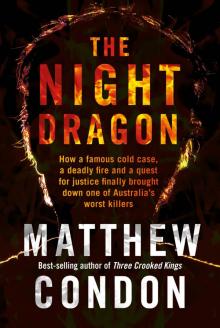 The Night Dragon
The Night Dragon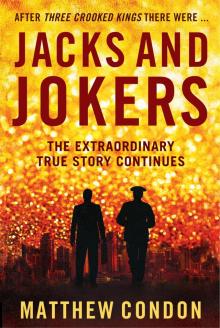 Jacks and Jokers
Jacks and Jokers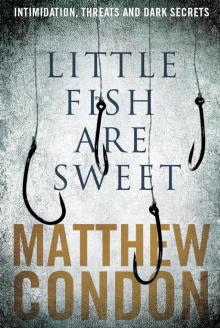 Little Fish Are Sweet
Little Fish Are Sweet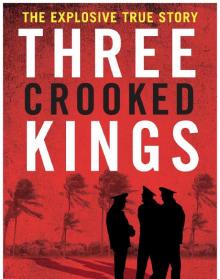 Three Crooked Kings
Three Crooked Kings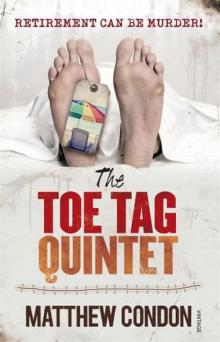 The Toe Tag Quintet
The Toe Tag Quintet